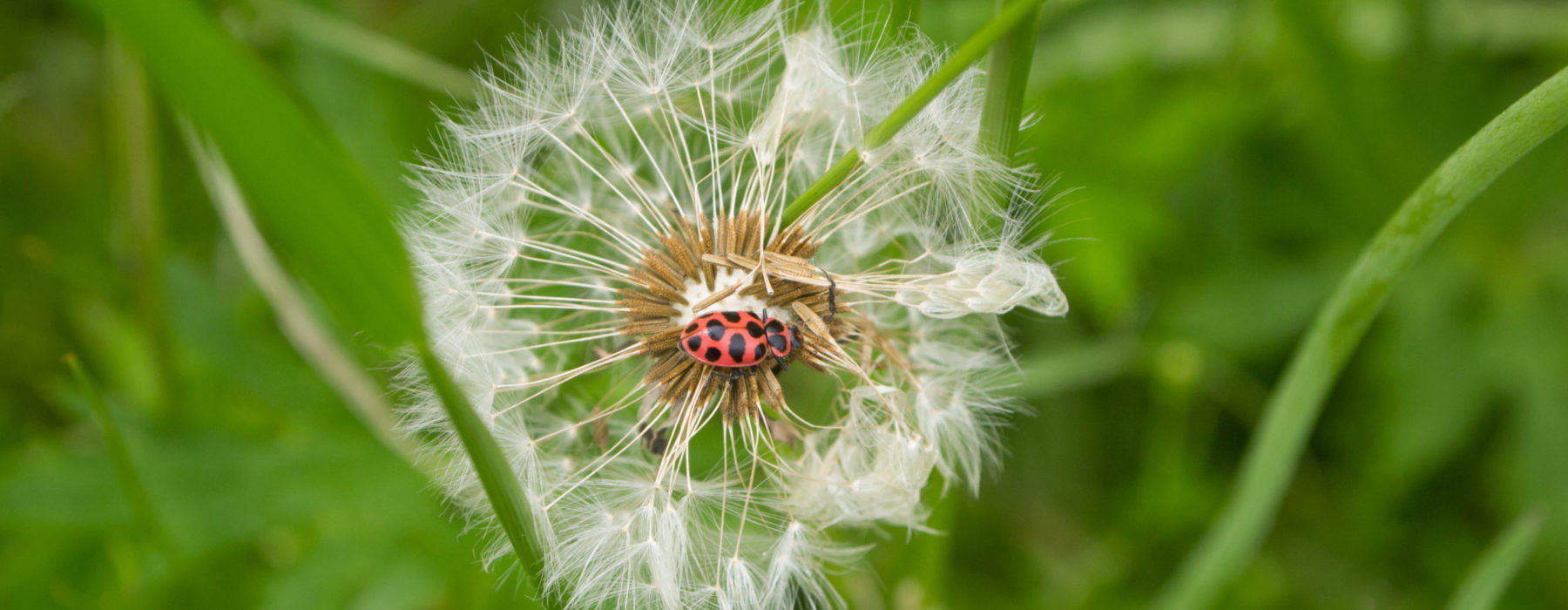With their multitude of colors and patterns, lady beetles catch the eye of even the most insect-averse. They have also captured the attention of the Vermont Center for Ecostudies’ Vermont Atlas of Life team. This May, the team will launch a project focused on rediscovering Vermont’s long lost lady beetle species, called the Vermont Lady Beetle Atlas. To kick off the Atlas, VCE is encouraging anyone who is interested in searching for lady beetles to head to their yards from May 15th to 18th to participate in the Backyard Lady Beetle Blitz. Search for lady beetles in gardens and potted plants, among weeds and shrubs, and even along the edges of your house. You never know where they might be hiding! The goal is to find as many lady beetles as possible over those four days and add your sightings to the Vermont Lady Beetle Atlas project on iNaturalist.
Lady beetles were not on VCE conservation biologist Kent McFarland’s radar when he asked Jason Loomis, VCE’s software developer, to digitize a historic Vermont Lady Beetle report. “We’re always on the lookout for historic natural history data,” explains McFarland. “When we find them, our mission is to rescue them from potential oblivion in the dustbin of history. We had a 43-year-old document which provided a snapshot of lady beetle life prior to 1976—Lady Beetles: A Checklist of the Coccinellidae of Vermont. Jason began pulling the records into a database, and we quickly realized that many of the beetles reported hadn’t been seen in decades.”
Alarm bells started going off and Kent went to work, sifting through historic lady beetle collections from the University of Vermont Zadock Thompson Natural History Collection, Middlebury College, and the Vermont Forest, Parks, and Recreation collection, and modern records from the Vermont Atlas of Life iNaturalist project and the Lost Ladybug Project at Cornell University as well. As the pieces fell into place, he realized that 13 of Vermont’s 33 native lady beetle species have been missing since the 1970s. This may come as a surprise to anyone who has watched armies of bright red and orange beetles invade their windowsills once the autumn wind catches a chill. However, most of these winter roommates are in fact an invasive species—the Asian Lady Beetle—thought to be partly responsible for the native species’ declines.
Although it may appear that Asian Lady Beetles are all there is to see, look more closely at the plants near your home and you may notice other lady beetles who often blend in. A friend to farmers and gardeners alike, these tiny insects feed primarily on aphids and other pests who can destroy crops. Healthy, diverse lady beetle populations keep these pests in check, making the decline and disappearance of some native species quite concerning.
The Vermont Lady Beetle Atlas was created to find answers to the questions regarding these missing species’ whereabouts. The Atlas’s main objective is to collect information about Vermont’s lady beetle species by conducting field surveys and revisiting older records in order to develop a deeper understanding of how they are faring. However, VCE cannot undertake this endeavor alone.
Lady beetles are tiny needles in the vast haystack of Vermont’s woods, fields, and gardens, making it difficult for a handful of biologists to successfully search alone. Looking to the Lost Ladybug Project as an example, VCE is asking citizen scientists for help in searching for the missing species. While you can start looking for lady beetles anytime, the official kick-off is VCE’s Backyard Lady Beetle Blitz the weekend of May 15th. Every lady beetle counts!
If you’re interested in learning more, please visit the Vermont Lady Beetle Atlas website at http://val.vtecostudies.org/projects/lady-beetle-atlas/. For questions related to the Atlas or the Backyard Lady Beetle Blitz, please contact Emily Anderson at .







